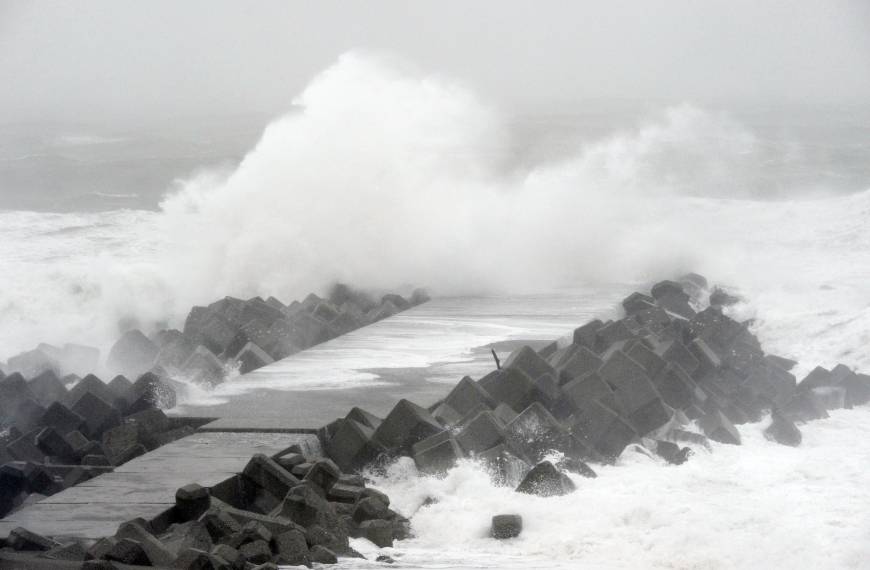
The season's 19th typhoon is likely to sweep through the rest of the archipelago on Tuesday, blowing through the Kansai, Chubu and Kanto regions before heading out to sea off the coast of Tohoku in the morning, where it is expected to fizzle into a tropical depression.
At 4 p.m., Vongfong was blowing through Kochi Prefecture at a speed of 45 kph, with an atmospheric pressure of 975 hectopascals at its center and maximum gusts of 108 kph. It was forecast to reach the Kanto region including Tokyo early Tuesday.
The typhoon hit Sukumo, Kochi Prefecture, at around 2:30 p.m. after making landfall in Makurazaki, Kagoshima Prefecture, at around 8:30 a.m.
Over 400 flights were canceled the same day, many in and out of Kyushu and Shikoku, while the Sanyo Shinkansen Line was forced to suspend service in Hiroshima Prefecture in the morning by strong winds.
Some services on the Kyushu Railway (JR Kyushu) network were also suspended in the morning, while West Japan Railway (JR West) was set to cancel all service in Osaka and the surrounding areas as the typhoon approached in the afternoon.
Further North, evacuation orders were issued in advance in some parts of Chiba Prefecture, which was later hit by a blackout, and on the southern tip of Kyushu in Miyazaki Prefecture, according to NHK.
Overall, evacuation advisories were issued in seven prefectures spanning the Kyushu, Shikoku, Chugoku, Okinawa and Kanto regions, according to an NHK tally as of 2 p.m.
As of 3:50 p.m., much of western Japan was warned by the Meteorological Agency to be aware of the potential for "major" disasters that could be caused by heavy rain and winds. At around 5 p.m., Ehime, Tokushima and Hyogo prefectures were warned about potential mudslides.
The agency said eastern and northern Japan should expect more than 80 mm of rain fall per hour along the Pacific coast, where tornados, storm surges and violent waves would all pose danger.
Senior agency official Hiroshi Sasaki called for precautions to be taken because "winds and waves can turn violent quickly and the rain may become heavy in wide areas as the typhoon approaches them."
According to Kyodo News, at least 40 light and heavy injuries have been blamed on the typhoon, including four people who were toppled by strong winds.
In Goto, Nagasaki Prefecture, a 51-year-old Kobe man visiting relatives broke his leg in a fall after going outside to check the wind.
Television footage showed the roof and walls of a house ripped away by gusts in Makurazaki, while huge waves were smashing into breakwaters.
"We are calling on our residents to remain on alert because we are still within the storm zone," said Naoki Jomori, an official at the Makurazaki disaster office.
NHK said at least 45 people had been injured by typhoon-related accidents so far, including the 23 hurt when the storm pounded Okinawa over the weekend, when it was much stronger.
In Shizuoka, three Chinese were swept away by high waves on Sunday afternoon while fishing on the coast, a local police spokesman said.
"Two of them were rescued but the remaining one, aged 26, is still missing," the spokesman said.
The Meteorological Agency warned that landslides, floods, high waves and heavy rains could threaten much of the archipelago, which saw a relatively wet summer trigger several landslides, most notably in Hiroshima, where more than 70 people died.
The typhoon also paralyzed traffic, stranding thousands of people traveling at the end of a three-day holiday to honor health and sports day.
The typhoon came just a week after another typhoon whipped through the country, leaving 11 people dead or missing.



Reader Comments
to our Newsletter